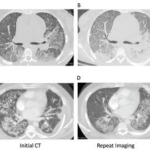My guess for explanations for the absence of reports of more medical problems in July are, in part, that hospitals and training programs compensate for new resident inexperience early in the academic year by systematic redundancies, scheduling of upper levels of residents, and greater oversight by attending physicians, fellows, and other staff, and probably also that more subtle yet clinically and economically important performance issues are simply not well documented nor identified in studies.
Vegetable…
I’ve tried not to select articles from our mainstream rheumatology journals for comment. But how many of you read the paper in Arthritis & Rheumatism last April about berberine?4 Berberine is a “vegetable,” an isoquinoline alkaloid present in certain plants that have been used in traditional Chinese medicine. Berberine has been found to have antiinflammatory and immunosuppressive effects in vitro and in animal studies. This paper extends those observations by noting that berberine induced apoptosis in dendritic cells, selectively, and ameliorated collagen-induced arthritis in mice while also suppressing humoral and cellular responses to collagen. This is the not the first time we’ve discussed a potential new antirheumatic therapy derived from plants, and it won’t be the last. Perhaps we will hear more about berberine in clinical trials.

…And Mineral
How many of you have electronic medical or health records (EMRs or EHRs)? We all are supposed to, eventually. I didn’t have one as I left Saint Barnabas in the fall of 2010. With my responsibilities as department chair there, for quality, safety, efficiency, efficacy, clinical performance, utilization, documentation, legibility, reduction of paper and paperwork, implementation of clinical prompts, evidence-based care, care pathways and guidelines, managing variations in care, understanding variations in costs and outcomes, assuring ready availability and access to records/charts, and other matters, my counterparts and I yearned for an EMR, hoping that it would almost magically resolve these and related issues.
I sort of have an EMR now at USC and USC-LA County medical centers. I think the only improvement is legibility. I’m not sure that the EMRs, even the simple versions we have here now, necessarily lead to better, or even better documented, care yet in and of themselves. Oh, there are the terrific advantages (usually) of availability, portability (to a degree), accessibility, size, cost reductions, and such. But they bring their own set of problems. These concerns have been reported in the literature.5-9 Although a study from a government office found that 92% of recent articles reported “positive” conclusions about the implementation and use of health information technology, another systematic review could find no evidence of improved patient outcomes or cost effectiveness from ehealth technologies.7,8 Certainly the transition to them is not always smooth.5,6,9
